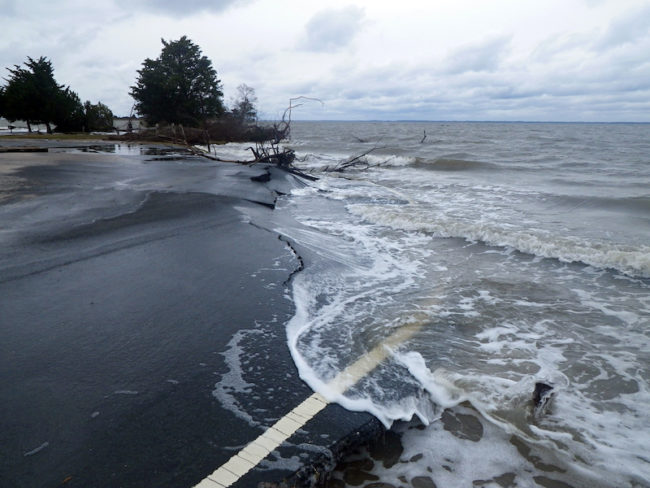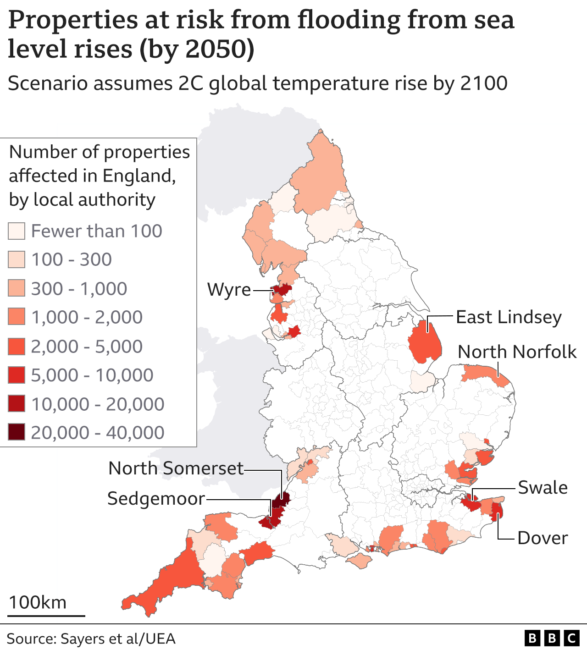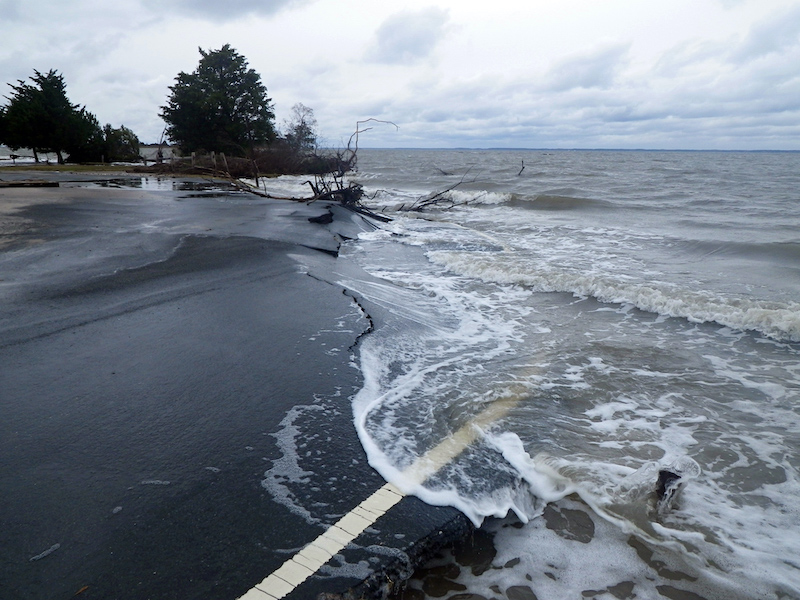
A new study published by the UK’s Tyndall Centre at the University of East Anglia has revealed some rather startling news. Nearly 200,000 English properties are at risk of being abandoned from the 2050s due to rising sea levels.
We have known for quite some time that sea level is rising.
We have also begun to appreciate that the rate at which sea level is rising is accelerating.
What often gets pushed to one side is the inevitable impact this will have. This is something that is happening now. It is not an event for some far off future.
What exactly will happen?
Between now and the 2050s, sea level will have risen by another 35cm … yes cm, not mm. That’s 13.7 inches.
What is also happening is that foreshores (the bit between high and low tides) are being eroded. This results in bigger waves reaching shore. The combination of rising sea level and bigger waves puts many properties at risk.
This is the do-nothing outcome.
It is not inevitable. Sea walls can be improved and also other costal defences can, and most probably will, be put in place to protect many properties that face this risk. Rather obviously protecting everything is not an option.
Serious decisions will need to be made now. What can be protected, and what will need to be abandoned?
Is this really a new insight?
Actually, yes it is.
Current shoreline planning documents in the UK had previously identified about 30-35,000 properties along the coast that were at risk. This new study reveals that the actual number of properties at risk is about five times higher.
Now that the knife has been stuck in, lets also for good measure give it a twist.
Beyond all of this there are areas that are at risk due to costal erosion. In 2018 the Committee on Climate Change (CCC) had already identified about 100,000 properties that faced this risk. To add all this up, the grand total is this – 300,000 properties are at risk from rising sea level and costal erosion.
Current Plans
In the UK, it is not just the central government that is involved. Local authorities, those that have shorelines to consider, have assessments in place that are commonly referred to as “Shoreline Management Plans”.
The general guidance that prevails for these so far is best summed up as “Hold-the-line”.
In other words, there is an existing expectation that sea walls and sea defences will be built and managed by these local authorities.
What this new study reveals is that as many as 30% of these plans are just a fantasy.
Buying and Selling property at risk
Typically when buying a property in the UK you borrow from a bank or building society. These loans, known as mortgages, run for a very long time. As many as 41% of them have terms that are greater than 25 years.
Rather a lot of people could find that they have debt on a property that it is no longer possible to live in, or at the end of the term needs to be abandoned.
Well yes, if somebody did find that their house had been lost to the sea, but they were still in debt for the next 15 years paying off the loan, I can indeed imagine that they would simply hand the keys over to the bank and walk away.
Banks are not daft. They will see this risk coming. The purchase process will mandate a full survey and if such a risk emerges from that, then I can see the bank deciding “Nope” for a mortgage approval.
In other words, it may not be either central government, or local government policy that drives what happens. Market forces will also play a role.
Where exactly are the risky areas?
The BBC has turned the list of areas from the study into a map …

If you happen to have retired and live in a costal property in North Somerset, then the loss of the property thirty years from now might not be on your worry list. As for the next generation, or younger people living there, well … now might be a good time to start to think about the longer term.
What is now certain is that these risks are not just possible but inevitable. We are already committed to this. The CO2 that has been produced is at a level never seen before by our species (421 right now and still rising). The climate system responds slowly. Sea level also responds and rises slowly.
Just how bad will this get?
Sea level will not stop rising in 2050, but instead will continue upwards.
There is enough frozen water in Greenland and the Antarctic to raise sea level by 70 meters (230 feet).
That would wipe out every costal city on the planet. London, New York and much much more … gone.
Despite the best efforts by Ron DeSantis to reject the science, most of Florida would be under water. You really can’t stand on the shoreline and tell the tide to not rise. You just can’t win that argument. Trust me it has been tried.
That is of course not the 2050 scenario, but is something unfolding over a far longer time span.
We do still have choices.
If we cut back emissions drastically, then we can slow this down. If it hits us rapidly over several generations, we can’t adapt to that. If we slow it down to a span of time that is thousands of years, then that gives us time to adapt.
This is not just about the UK, it applies everywhere. Sea level rise does not recognise national borders.
Bottom Line
Short term, we will need to pull back and abandon much.
Longer term, we need to drastically cut back our emissions and slow things down so that we get enough time to adapt.
Meanwhile in the UK …
Fairbourne in Wales, is due to be abandoned by 2054 because of sea level rise. This community contain a large number of properties and a population of 700 people.
Rinse and repeat for many other similar places around the globe.
Further Reading
- Press Release by the Tyndall Centre at University of East Anglia – 150,000 – 200,000 homes and businesses in England at risk of sea level rise from the 2050s
